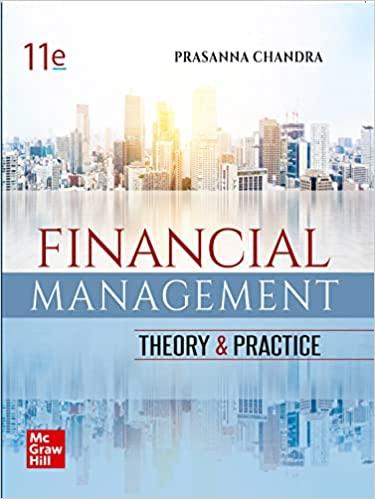Question
Vegas & Vegas Co. is a large and a successfully growing company in Las Vegas which owns many properties across the city (this is a
Vegas & Vegas Co. is a large and a successfully growing company in Las Vegas which owns many properties across the city (this is a fictional company, by the way!). The owner of the company has been contemplating for a long time to shut one of the existing projects down and turn it into something more attractive and unique.
The companys owners initially spent a good amount of time researching the potential of a new business idea. This cost the company $50,000 about a year ago when this amount was paid to a team of selected employees in the research and development division. In addition, the company recently hired a group of local consultants, and paid them a total of $200,000 to analyze the local Las Vegas market and to figure out what type of new property might be lucrative.
Very soon the consultants came up with a recommendation to sell the trailer park one of the properties that Vegas & Vegas Co. owned and replace it with a luxurious hotel with individually rotating floors which is something that the city doesnt have yet. The hotel would be called The Da Vinci Hotel.
In order to free up the space for the hotel, the company would need to sell all 50 trailers that are currently sitting in the companys trailer park. 20 of them were purchased fifteen years ago, while the remaining trailers were purchased ten years ago. Trailers are considered to have an economic life of fifteen years after which they are considered to have fully depreciated. Depreciation occurs at a constant rate each year. Each trailer was originally purchased for $100,000. To get rid of all of them fast the company would need to sell the trailers at a large discount. It has one large customer in mind who may be willing to purchase and transport all trailers for half of their original price.
It would cost the company $80 million to build The Da Vinci Hotel. Half of this amount will be paid to construction workers and half to buy all necessary equipment for the rooms, bars, restaurants, parking garages, etc. It is assumed that Vegas & Vegas Co. could provide enough incentives to a construction company to build the hotel within a short period of time, so that rich customers could start booking rooms by the end of the first year. The company is planning to keep the hotel running for 8 years. At the end of the final year of the project all equipment used in the hotel will be sold for a quarter of its original price. The equipment is assumed to fall into a 15-year property class under MACRS.
The proposed hotel would have 1,000 rooms. Due to the time spent on the hotel construction, the company estimates that during year 1 only 300 rooms are fully completed. The company also estimates that at any point of time the average room occupancy will be about 80 percent. Each room will cost $200 per night; in other words, if occupied every day the annual profit would equal $73,000 (which is $200 x 365 nights) per room. The annual cost of running the hotel is estimated at $2 million. Additional annual miscellaneous maintenance costs in the first year will add up to $10,000 per occupied room, and these costs are expected to increase by $2,000 each year.
To be able to cover unforeseen repair and other emergency expenses, the company would need to immediately set aside $500,000 in cash. It will be increasing this cash buffer by an additional $100,000 each year. At the end of the final year of the hotel project the money will be fully recovered as the cash buffer would no longer be needed.
The corporate tax rate is 34%.
The riskiness of this project requires a 20 percent annual rate of return.
Based on the information given above, answer the following questions:
1.) In the form of a table with year 0, year 1, year 2, etc. in the top row show your calculations of the Total Cash Flow for each year and all of its important components.
2.) The companys managers are also concerned with the worst case scenario under which the hotel would not be able to attract enough customers. They are guessing that there is a 10 percent probability that this may happen. Under this worst case scenario, the room occupancy will be only 30 percent in the first three years, and once the failure of the business is known to the locals the room occupancy will drop to zero in all following years starting year four. If, however, the hotel project turns out a success, the room occupancy will stay at 80 percent for all eight years, as was initially estimated.
Allowing for this worst case scenario implies that the expected room occupancy rate for each year will change. How will this change affect (in dollars) the expected current value of the hotel project? Explain what will change in the table that you created for question #1.
3.) Continuing question 2.), would the current expected value of the hotel project be different if Vegas & Vegas Co. had an option to shut the hotel business down and sell all equipment at the end of the second year if the business turns out unsuccessful? If yes, what would be the value (in dollars) of this option? Explain what will change in the table that you created for question #1.
Step by Step Solution
There are 3 Steps involved in it
Step: 1

Get Instant Access to Expert-Tailored Solutions
See step-by-step solutions with expert insights and AI powered tools for academic success
Step: 2

Step: 3

Ace Your Homework with AI
Get the answers you need in no time with our AI-driven, step-by-step assistance
Get Started


